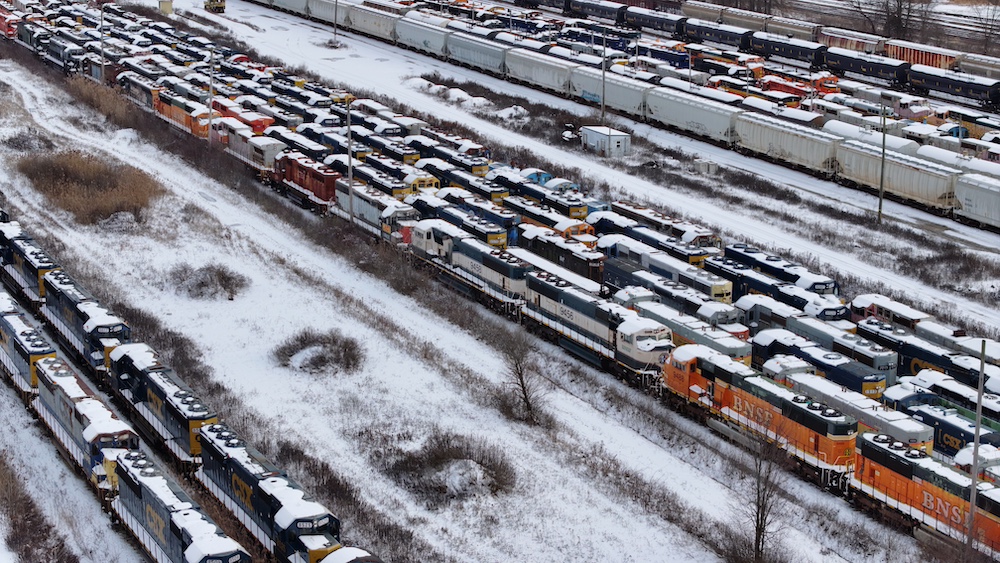
A frequent question from railfans is why? Why are some diesels destined for scrap?
Why does your favorite locomotive go off the breaker’s yard? Why do some engines get shuffled off this mortal coil while others continue for decade after decade?
There is a multi-part answer to that, and it involves bureaucracy, the economy, mechanical issues, and even plain luck.
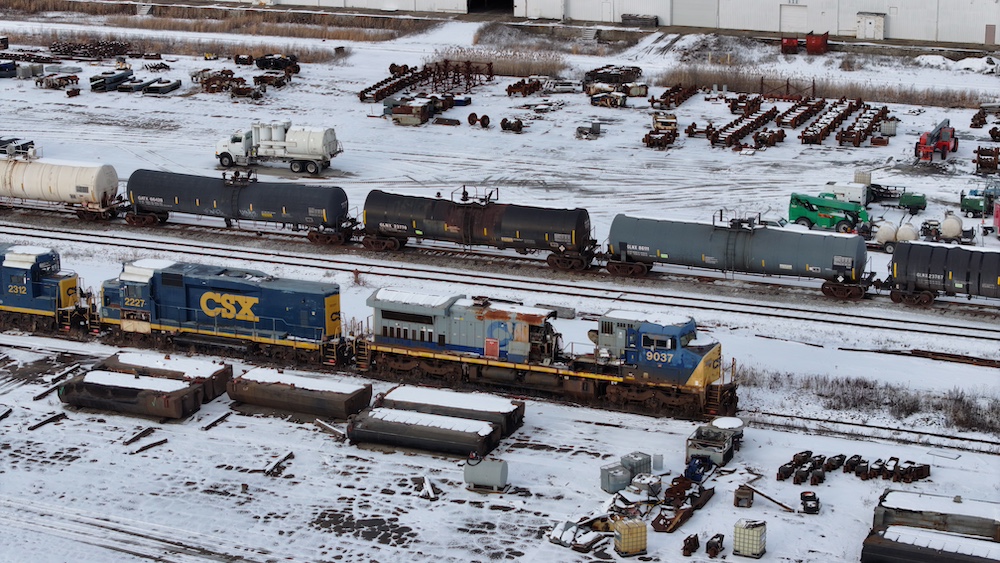
The economy
The most obvious reason why a locomotive might go to the scrapyard is simple economics. Prolonged downturns in traffic might render many locomotives surplus to requirements, or a rise in scrap prices may make it viable to cut up already-stored locomotives. Due to accounting rules and best practices, locomotives can remain stored for up to two years after being pulled from active service before they can be sold for scrap or other uses. During this time, railroads will often treat these stored engines as extra power, ready to go at short notice should demand return or the economy improve.
However, if a locomotive remains in the dead line long enough to be fully written off the company’s books, it’s put up for sale. Gone are the days of in-house crews breaking down an engine for the metals — Conrail was the last of the Class I roads to do that, and the practice is now left only to short lines and scrap merchants.
Where the engine goes after it leaves the railroad is, once again, a matter of economy. If the high bidder was a metals dealer, then it will probably be cut up sooner rather than later. If it goes to an operation like LTEX, it may be scrapped, it may sit for years waiting a rebuild and subsequent new life in lease service, or it may wither away to nothing as a source of spare parts for those engines that continue operating. An engine can also be sold directly to a short line or an industrial operation, where its work may continue for decades to come.
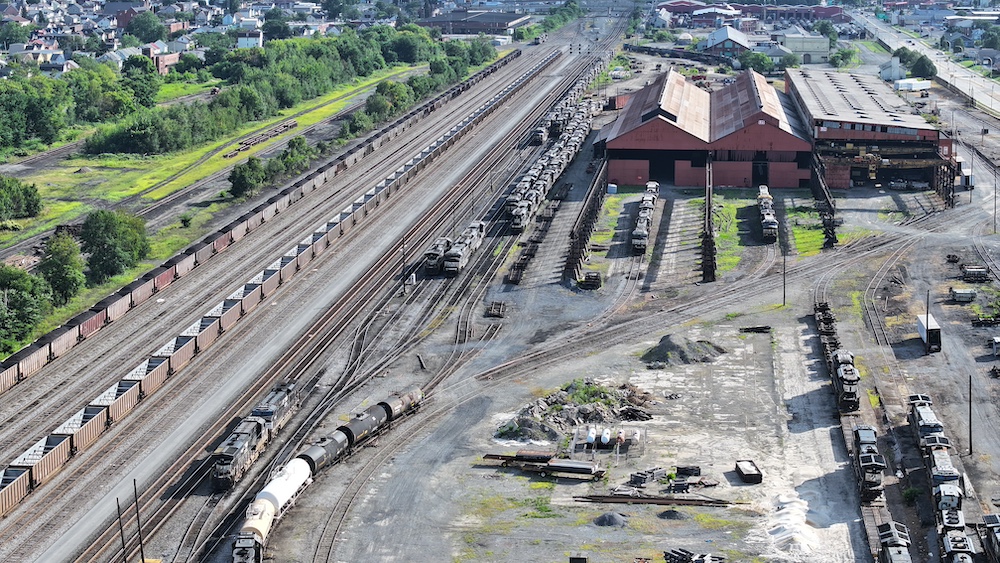
Mechanical problems
As a railway’s fleet of locomotives ages, certain units will experience more problems than others. There are a variety of reasons for this, ranging from accidents, poor maintenance, or even design flaws. For example, the Electro-Motive Division Dash-2 series of locomotives have significantly fewer wiring issues than their older compatriots due to Dash-2’s modular circuitry and Exane wiring, which is more resilient than the wiring formerly used by EMD. As a result, while the wiring in an SD40 locomotive can decay as the locomotive nears 30 years old, the wiring in an SD40-2 of similar age may be in better condition, or at the very least be significantly easier to re-wire. It seems simple, but these factors can often be the difference between a long career as a locomotive, or a career change into razor blades. Similar issues have befallen the General Electric Dash 8 locomotives; they are significantly harder to rebuild/rewire than their Dash 9 successors and are more likely to be removed from mainline fleets as they age.
Additionally, as locomotives get older and their value to the railroad decreases, major mechanical failures can sideline them permanently. While some failures are obvious — like a cracked engine block or major wreck damage — sometimes the final nail in the coffin can be quite small: In July 2023, the Portland & Western Railroad retired the last SD7 in revenue service – No. 1501 — after it developed a simple water leak.
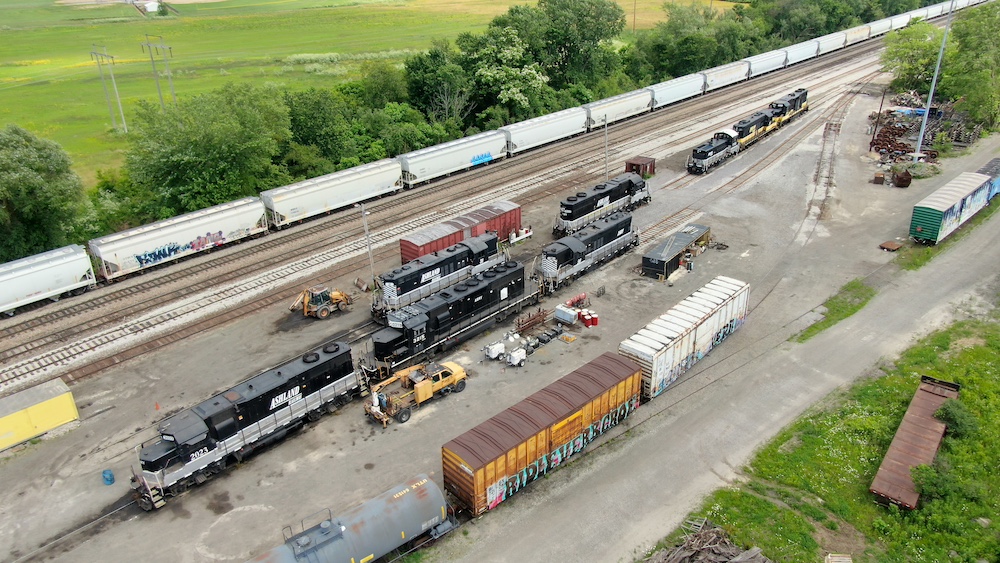
The bureaucracy of railroading
Railroads are, among many other things, a business, and with that comes many levels of bureaucracy that informs (and occasionally hinders) operations. As an example, a locomotive is nominally under the authority of the railroad’s mechanical department, which can decide when it is overhauled and repaired. In day-to-day operations, however, the engine is really under the control of the local yard- and trainmasters who have final say on what work the locomotive does and when. Additionally, a locomotive is also an asset that exists on the railroad’s balance sheet and is subject to the company accountants. Finally, the railroad’s C-Suite executives have full control over the entire railroad and can make a unilateral decision to go around all the aforementioned bureaucracy. And this explanation only covers locomotives that are owned outright by railroads, and not engines that are leased from financing companies.
This all affects the likelihood of a specific locomotive ending up on the scrap heap. Railroads tend to keep frontline power for around 20-30 years, according to Don Graab, former vice president of mechanical operations at Norfolk Southern. After that point, efforts will be made by the railroads to pare down the fleet’s older locomotives. However, in recent years, with the increased focus on short term financial gains, decision-making began to become more unilateral.
Graab said, “Historically, the mechanical department always played a role in what units were stored and what units were sold. For a long time, 12 or 13 years, the interdisciplinary committee that reviewed this and made recommendations of management twice a year at six-month intervals. More recently, they just bypassed the mechanical department, went right to the local trainmasters and said, ‘you know, you got a big yard out there in Decatur, give us three GP38s, just give us three numbers and we’ll scrap those.’ And the bad part about this is it’s just willy-nilly.”
This direct approach to locomotive scrapping goes a long way to explaining why otherwise functional locomotives end up in the hands of scrap merchants like LTEX or National Railway Equipment.
Luck
Sometimes, a locomotive survives (or dies) through the simple luck of the draw.
As noted, a railroad’s bureaucracy (and the various ways it can be side-stepped) will occasionally strike down an engine in its tracks. Additionally, mechanical damage can abruptly sideline a locomotive that otherwise could have kept working well into the future. There are numerous anecdotes of both, but two stand out:
Texas’ Dallas, Garland & Northeastern Railroad had invested heavily into Genset locomotives in the 2010s. These locomotives did not pan out as expected, and quickly became hated by crews. One locomotive in particular — RailPower RP20BD No. 143 — was so thoroughly unreliable and disliked that when it eventually caught fire, a quick-thinking employee is said to have directed firefighters to point their hoses into the locomotive’s generator compartment, rendering the engine a total loss in seconds.
A second example of luck playing a role was cited by Don Graab. “Yeah, well, occasionally there’s been these snafus where this comes to mind with the Norfolk & Western. They saved one last Fairbanks-Morse six-axle locomotive to get to a museum and parked it out at Schaffer’s Crossing, where I used to work, and it sat there for years, and somebody who didn’t know about this commitment to give it to whatever museum got wrapped up and said ‘we gotta get rid of some of this crap’ and sold it off to a scrap dealer. And the museum was like, “what? You promised us that.”
“Things like that happened,” Graab added, “this was a six-axle, 2,400 hp locomotive. I don’t remember which predecessor road it was from, Virginian had them and Wabash had them, but they had cut all the others down into slugs. This one was still there, with the opposed pistons and everything. [It] sat there for about six or ten years and, all of a sudden, it disappeared. That’s a shame.”








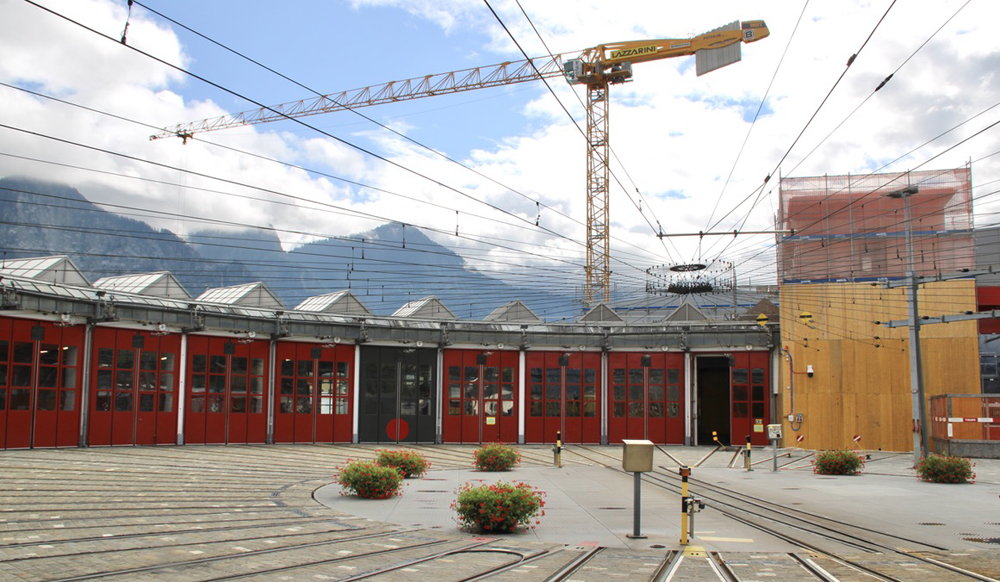
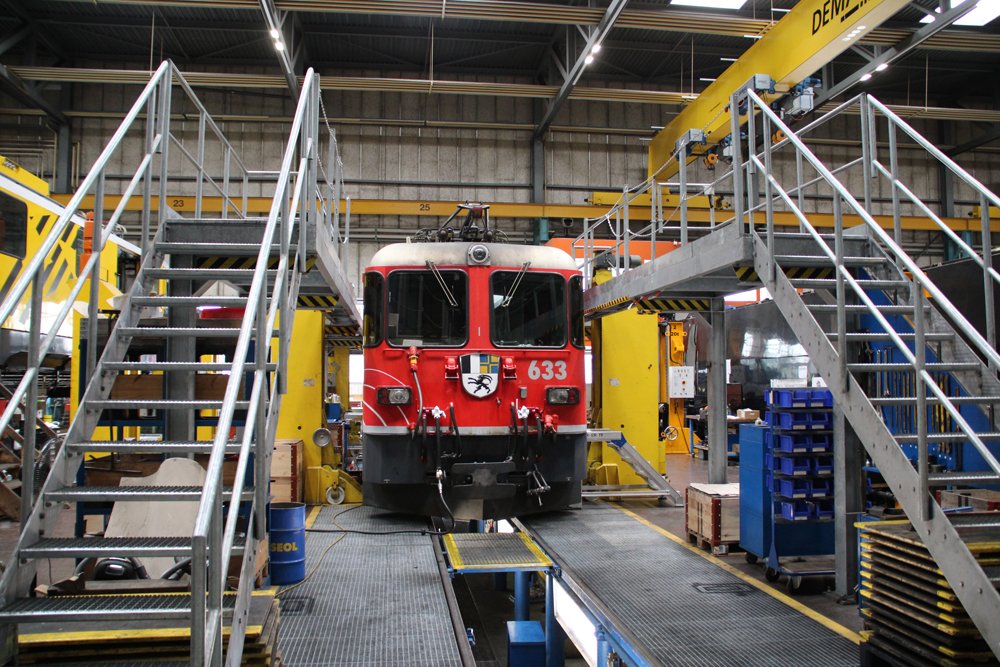


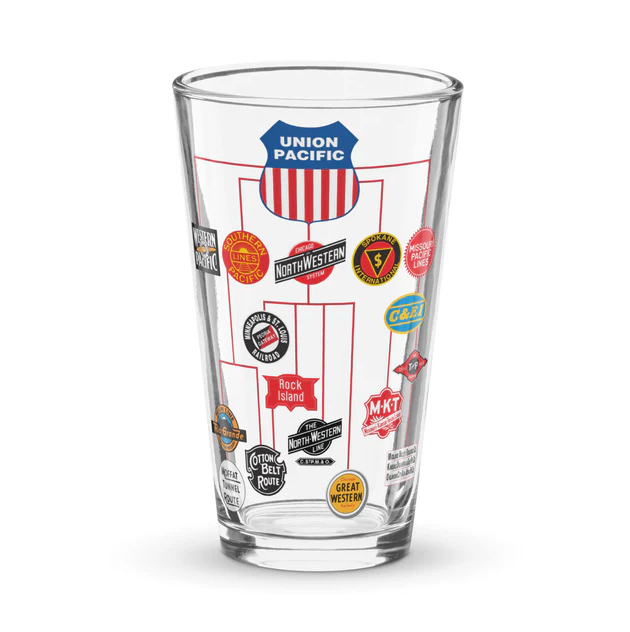

I ran a coal train the other day with newest BNSF ES44AC in lead, I believe it was a 3200 series loco. I remember when BNSF got their first batch back in ‘09, you could smell the paint on them
Larry’s Truck and Electric has what is the last locomotive ever owned by the B&O, the #8595, a GP50, when that locomotive was obtained by the old joint B&O/C&O/and WM conglomerate. Someone needs to buy/donate that locomotive to the B&O Museum to take its place alongside all of the historic locomotives at the B&O Museum in Baltimore.
Don’t know why any museum would want one, except maybe in this case as the last unit owned by B&O. If not, then donate it to Progress Rail/EMD so they can take it out into a safe field and dynamite it to smithereens as the GP50/SD50 was the locomotive class that began the end of EMD dominance in locomotive building. It was such a pig that almost everybody that got them regretted it, almost like 244 powered Alco’s. They ran until they didn’t and that was way sooner than Alco or the railroad owners even considered. In fact it ended Alco in the US market.
EMD’s were always, and still are, less expensive that GE/Wabtec units but reliability issues will doom a locomotive faster than anything else. EMD came back with successful GP/SD 60 and SD70 models but they had allowed GE to finally get their foot all the way in the door and with GM in financial trouble, the last nail was in the coffin for EMD leadership. The Tier 4 fiasco of not getting a model quickly to market also didn’t help. GE took advantage of the lack of competition and as they say, the rest is history. Today, most railroads seem happy rebuilding their older “new” purchases to keep them soldiering on with the high price of new locomotive purchases rather than buy new. Seems like the majority of new models are for the export market and specific needs. High costs will probably keep that the priority for many more years…
VINCENT R. SAUNDERS, it’s NOT for the economic value (or lack thereof) of the unit, it’s for the HISTORIC value of the unit. Both the SD50 #8595 and the Tom Thumb need to sit next to each other in the Roundhouse at the B&O Museum.
A similar discussion about steam before the coming of the Diesel might prove interesting.
No mention of Depreciation rules. Plus the rules regarding equipment trusts which often led to engines’ sitting rusting away until the trusts ran out. The New Haven was a good example.
The prince of such deals happened when the City of Cincinnati made a deal with their private transit system and its taxation regarding ending trolleybus operation. The system had to park the entire fleet in a field rotting away during the life of the deal. Other systems made good offers for much of the fleet of fairly new vehicles but all were turned town to save the deal.
I do know that numbers of ex-conrail GE Dash 8-40CW’s and EMD SD60I’s and SD60M’s that were later serving under csx and norfolk southern did find new owners
UP still has GP 60’s in service on some branch coal lines. Shortlines also have a few as well as many in UP storage lines around the country. Canadian National still has SD60 “Cyclops” motors in service but the “Quad-clops” Draper Taper models may be all gone. And their are still a lot of older Geeps operating in shortline service all over the country. Their simplicity in building and maintenance was the key to their success. CN&W was still running GP7’s when UP bough them in 1995. And their are still a few EMD SD-9 “Cadillacs” in service on some shortlines. I know Nevada Northern has one and Salt Lake Southern RR still has a few in switching service (and one still in BN green paint) although the logo’s of former owners are painted over… They sure are fun to listen to as they load up to pull, the old Roots blown 567’s still rumbling and whining away…
One of the reasons locomotives get sent to LTEX is they are old. SD40s and Geeps are always in demand but if a locomotive has 1950s equipment inside of it it needs to be scrapped. 1950s equipment used vacuum tubes inside the electrical cabinets these parts are now impossible to find they burn out more easily and the computer technology is primitive.
1960s locomotives also end up on a chopping block because of issues with their engines.
1970s equipment the main issue right here is all their appliances blocks can be replaced but electric cabinets use modules these are hard to find.
1980s and 1990s locomotives these ones are easy to fix because they use the integrated circuitry all you have to do is swap the modules out and replace the motor and it is good for a couple more years.
Later 2000 locomotives these engines are good but there is emissions requirements and the computers on them need to be current so these ones to be rebuilt older ones have to be scrapped.
Brands that normally land up on the scrapping list are old ALCOs most of the Baldwins some early model GE and EMDs and most of the locomotives that were considered lemons. If a locomotive is going for rebuild it goes to Silvis and RRHMA and NRE rebuild it from scratch. If it has mechanical problems old technology or just does not run anymore LTEX is the final location and the locomotive is scrapped and melted down. That’s the life of a locomotive.
GE and Progress Rail do the bulk of the “modern” locomotive rebuilds, CSX even took a SD40-2 and had GE put a new GEVO engine and Cooling Fan housing on it. They look odd with the cooling fan housing overhanging the back of the locomotive by a foot or more. Don’t know if its operation is good or if it is typical of when you try to put two different builders of a product together in one product. Santa Fe tried to rengine their Alco PA passenger locomotives with EMD engines but it was costly and they just didn’t run as smooth. Nowadays that would have probably been an easier task but in the 60’s, that kind of technology was a bold step…